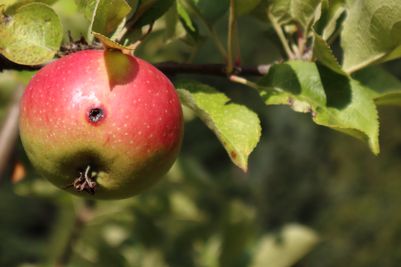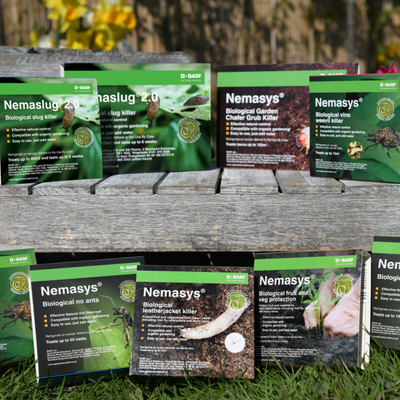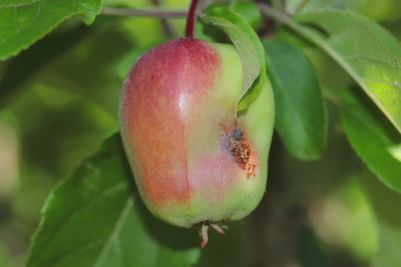Take control of codling moth this autumn with Nemasys Fruit and Veg Protection
Published:
Read Time: 2 mins
Nothing turns the stomach more than biting into a deliciously ripe homegrown apple, to find a rotten core and a grub in the centre. This is where the larvae of codling moths hide and feed on the apple before burrowing out to pupate. The larvae will drop to the floor in autumn to over-winter in the leaves and loose bark, making September and October the perfect time to apply Nemasys Fruit and Veg Protection.
The nematodes present in Fruit and Veg Protection are S.FELTIAE and S.CARPOCAPSAE, which target and kill an array of common fruit and vegetable pests, including codling moth larvae.
An application of Fruit and Veg Protection to the tree trunk, branches, and soil beneath the tree canopy will target codling moths in their larval stage, destroying them before they advance and lay eggs of their own next year. Applying nematodes in September through to October is optimal as this is when caterpillars have left the fruit and will be on the ground.
Nematodes are easy to apply and can be used when the air temperature is still above 12 degrees. Simply mix the contents with water into a watering can with a coarse rose, so nematodes can be distributed evenly but won’t get stuck in small holes, or use a sprayer for easy application to the trunk and branches.
To optimise codling moth control, a second application of Fruit and Veg Protection is recommended two weeks afterward, ensuring any larvae which had not yet fallen to the floor are also targeted and destroyed.
Nemasys Fruit and Veg Protection can also be used to target other allotment and garden pests, including carrot root fly, cabbage root fly, leatherjackets, cutworms, onion fly, ants, sciarid fly, caterpillars, gooseberry sawfly, and thrips, meaning grow-your-owners can rest easy knowing their hard work is protected from pests by biological nematodes.
To find out more about how nematodes work, take a look at this short video - https://youtu.be/JHNG1KSluh0
For further information and to find a list of stockists, please visit https://www.nemasysinfo.co.uk/ and follow basf_nemasys_uk on Instagram.
Ends
Editors notes
Nematodes are naturally occurring microscopic worms, already present in our soil. Beneficial nematodes attack and kill targeted garden pests. They are compatible with organic farming, easy to use and can even be kept in your fridge!
Research scientists have isolated the nematodes that kill specific garden pests including Slugs, Vine weevils, Leatherjackets, Caterpillars, Codling moth and much more.
BASF’s state of the art production facility in the UK produces billions of nematodes in a form that is easily applied by gardeners. Over 20,000 different species of nematodes have been classified, although some estimates put the total figure closer to one million! BASF has the largest specialist nematode production facility in the world, growing trillions of beneficial nematodes for use in their Nemasys range of pest control products.
BASF experts are available for interviews, features and expert comment on biological pest control management, and product is available for reviews, competitions and product trials.




